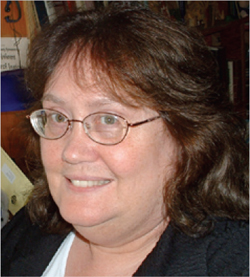Conference themes and approaches can be looked at as sort of a crazy quilt representing the state of the industry: with pieces of all different shapes and colors that come together to form a cohesive whole. They fit together in many ways, depending on the organizers (quilters?); many pieces are omitted and saved for the next quilt. But how to find the most successful combinations requires technique as well as imagination.
Here are some topics I’ve been enjoying this year so far. The annual WCBP conference and related CMC Strategy Forum early in the year are always good venues. We publish the forum’s resulting consensus papers, as you know. The particulates discussion this year was especially timely in light of new analytical techniques — and we’ll publish that paper this fall.
I returned to DC for the Phacilitate Cell and Gene Therapy conference, during which my publisher and I worked to finalize our cell therapies supplement (May). Becoming more conversant with the vocabulary and science of regenerative medicine is a logical next step for BPI, and especially now when many of those companies are debating commercialization models.
In March, the assembly of conferences in IBC’s Biopharmaceutical Production and Manufacturing week heightened for us the increasing sophistication of risk-based approaches, especially to process validation and technology transfer. And the BioProcess International Europe conference in Nice, organized by our UK-based IBC/IIR team, provided a comprehensive look at critical issues, offering additional tech transfer case studies and business models for scaling cell therapies up and/or out.
A month later I was in Vienna for the biannial ESACT conference, where I found two sessions to be especially valuable: one on vaccines and the other on fusion proteins. Discussion of cell therapies continued.
Midway through that week, I hopped up to Rotterdam for the ISCT conference — during which I was awed by the progress toward stem-cell therapies, organ replacement from a donor’s own cells, and other illustrations of progress in these areas that still sound like science fiction to me. A final presentation that week by Howard Levine of BPTC outlined a theme we’re tackling: What lessons from the MAb world can apply toward expediting commercialization of cell therapies?
Then our BioProcess Theater at BIO was a huge success this year, with many presentations and both noon-time panels fully attended. Charles Squires of Pfenex led a panel discussion on vaccines, and Levine’s colleague Susan Dana Jones led one on expediting commercialization of cell therapies. Those have been the topics for this year!
You will next see us at the annual BioProcess International Conference (in Long Beach, CA, this fall). I am indebted to all of you for helping me keep my brain cells tumbling around, happily loaded with the next big (and small) topics to piece together. And I never want to omit a critical piece of material, so please keep those emails coming my way. And I shall look forward to seeing a lot of you in Long Beach in November!


